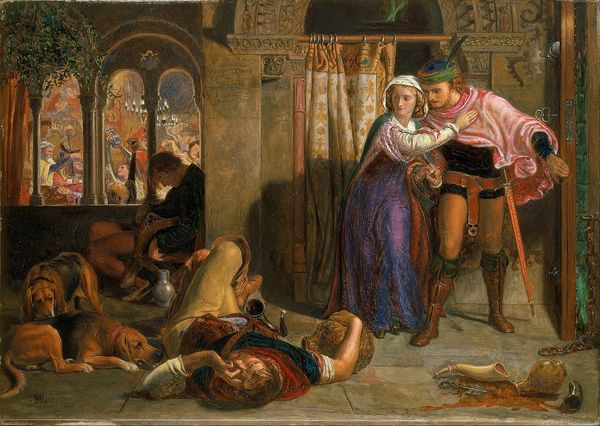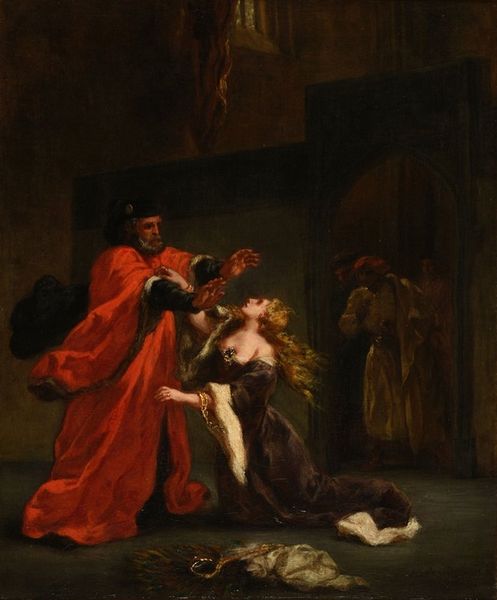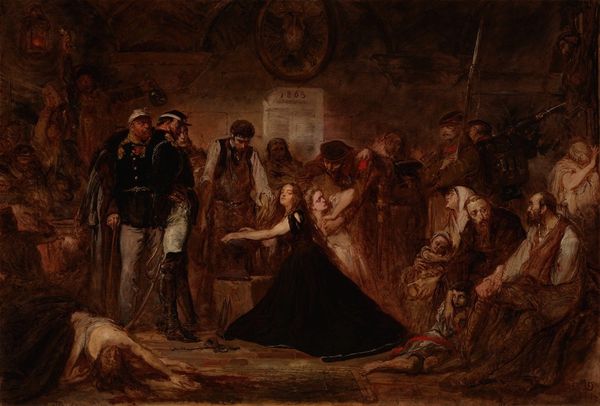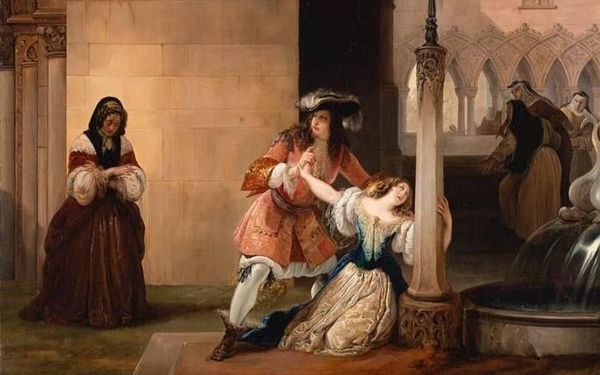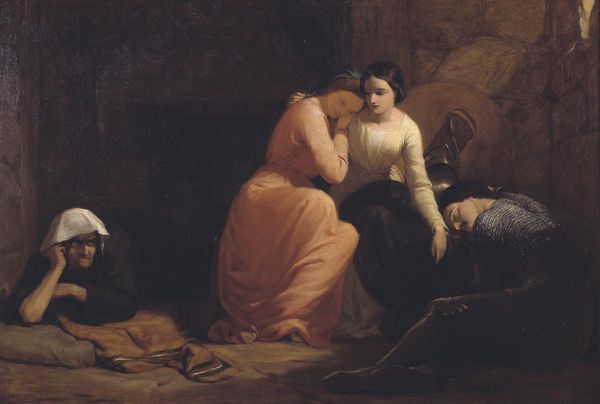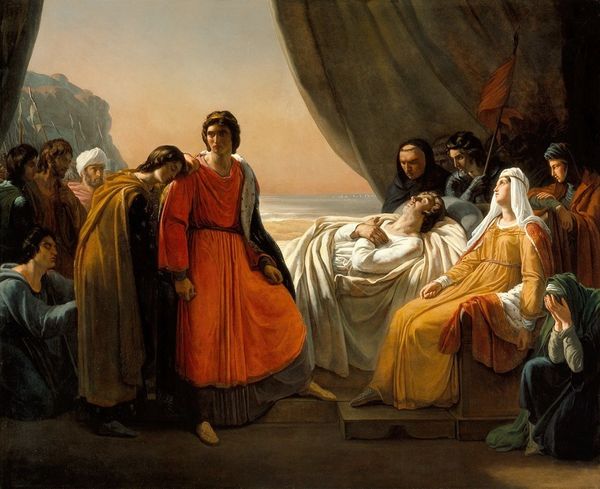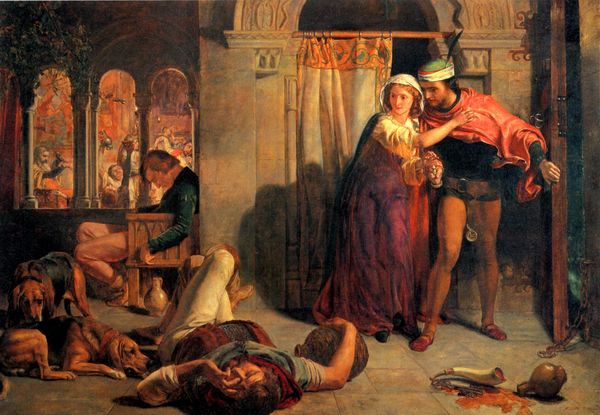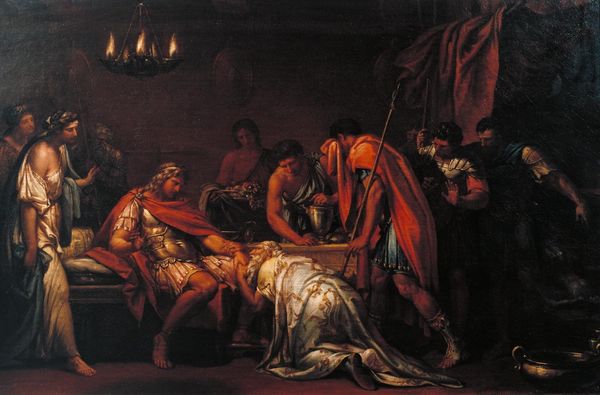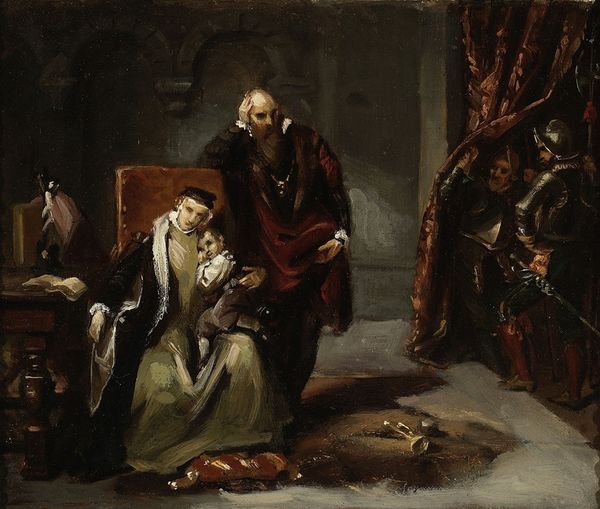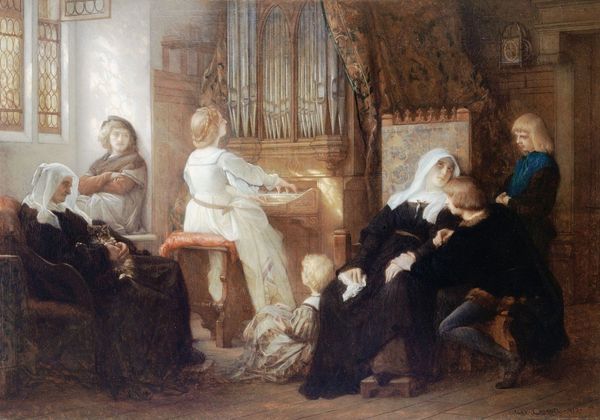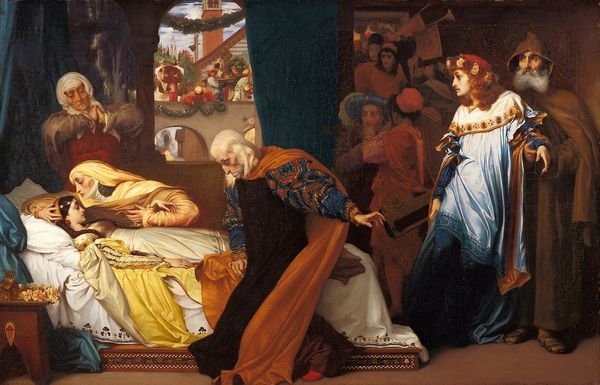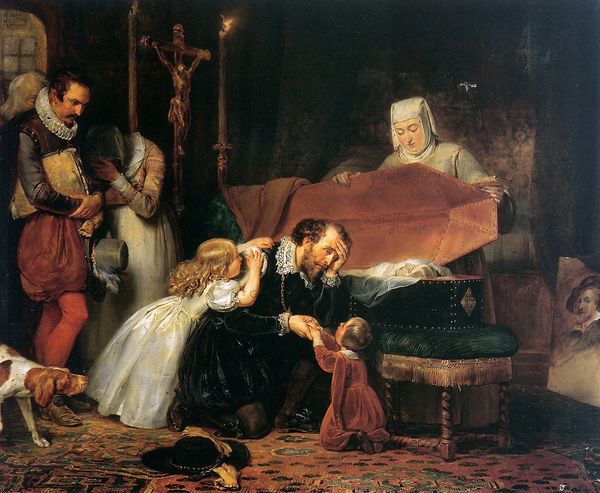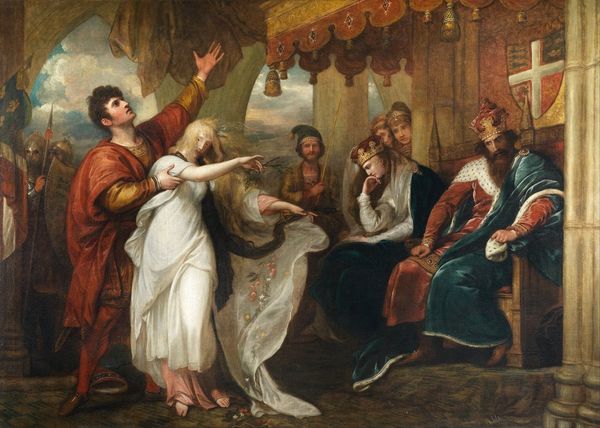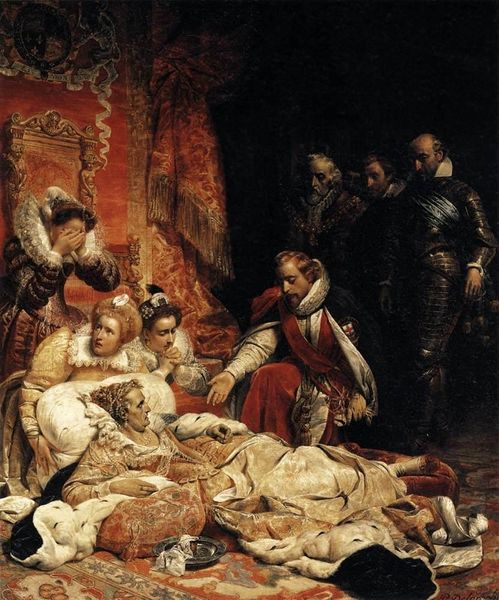
painting, oil-paint
#
portrait
#
figurative
#
painting
#
oil-paint
#
figuration
#
costume
#
romanticism
#
painting painterly
#
history-painting
#
academic-art
Copyright: Public Domain: Artvee
Have you heard of ‘the nine-day queen’? In 1554, Lady Jane Grey was beheaded for treason in London. Jane, a Protestant relation of the deceased Henry VIII, had reigned as Queen of England for just over a week following the death of Edward VI, before she was removed by the Catholic Mary Tudor (‘Bloody Mary’). She was just seventeen at the time of her execution. 🗡️ The French artist Paul Delaroche (1797-1856) here illustrates the tragic historical scene with an intense melodrama. He emphasises the vulnerability and helplessness of Lady Jane in her very last moments, as she is guided to the execution block. The bright white shade of her underdress and blindfold contrasts with the gloomy background. Here the white connotes innocence and purity, reminding the viewer of Lady Jane’s youth. 🦢 Owing to the vast size of the canvas at almost three metres wide, the figures in this painting are approximately lifesize. Imagine standing before the work. The human scale is striking, and lends the figure of Lady Jane an added realism that adds to the atmosphere of grief. 🙍 How has this work been interpreted in the centuries following its creation? ‘The Execution of Lady Jane Grey’ was critically acclaimed when it was first displayed in the 1834 Salon. Might this have something to do with the social context of revolution, sacrifice, and martyrdom which dominated France at this time? In the twentieth century, however, the painting fell out of popularity and was kept in storage for decades. It was rediscovered in 1975, and is now one of the most famous pieces in London’s National Gallery. ‘The Execution of Lady Jane Grey’ (1833) still has the power to move viewers to this day. 🖼️ Editor: Lucy Jude Grantham
